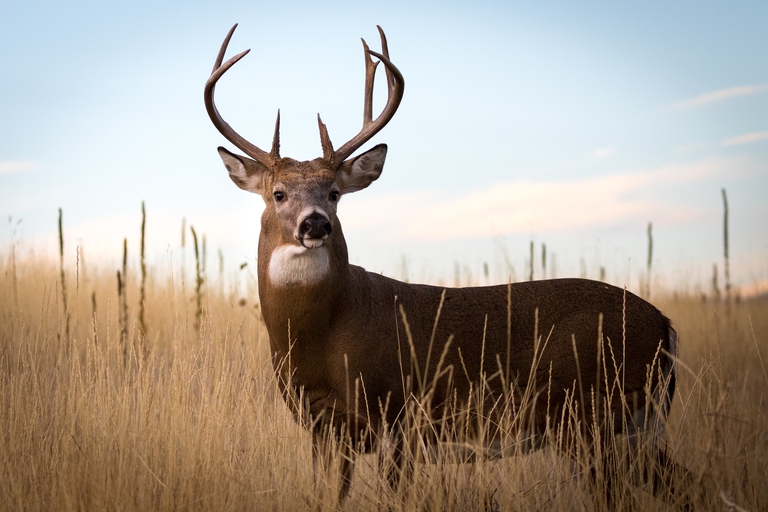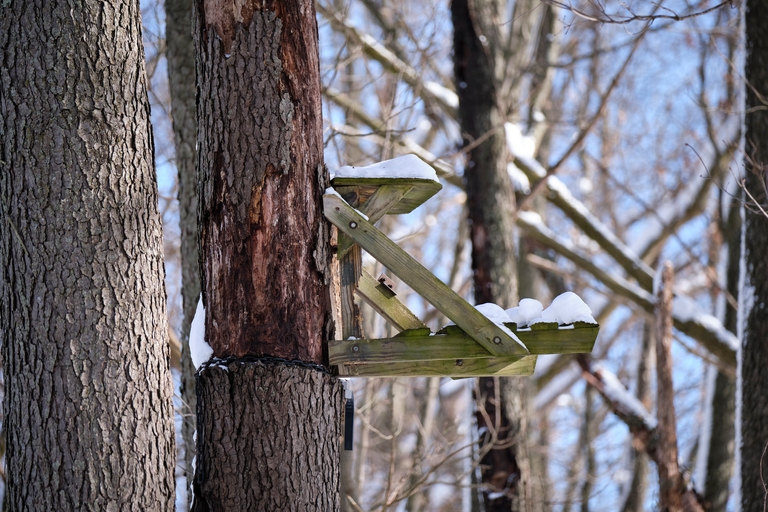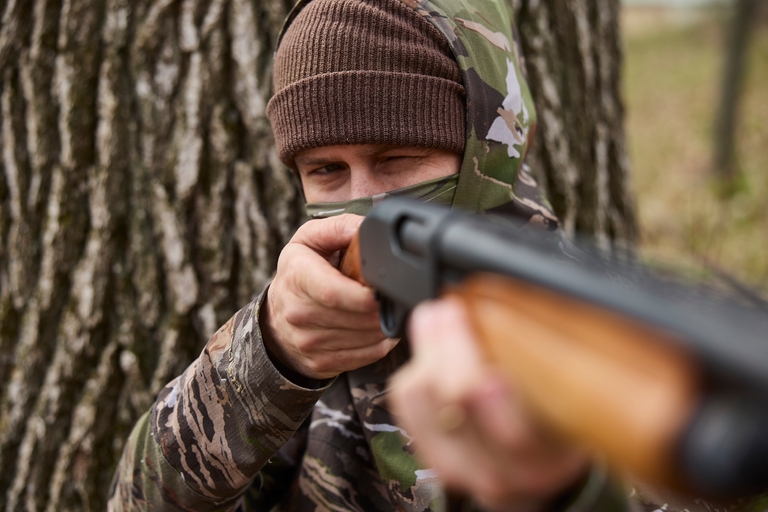Hunter Tip: How to Prepare to Hunt From Tree Stands

Before you consider using a tree stand (or climb into one), it's crucial to prepare for it.
Hunting from tree stands can give you a bird's eye view of the land around you, making it easier to track a deer into your safe zone of fire while remaining undetected high above the ground.
However, they can be notoriously dangerous as hunting tools without proper knowledge. Preparation is key! So, keep reading to learn how to use a tree stand safely before your next hunt.
5 Keys to Tree Stand Safety
Unfortunately, hunting from an elevated position (like a tree stand) isn't as easy as climbing into one and taking your shot. Hunters must arrive with the right safety equipment and know how to sit in the stand safely for hours while waiting for a buck to enter the field.
While we could go into great detail about safety for elevated hunting, the following five tips are keys to using a tree stand safely:
- Pick a safe tree. Your tree should be alive, fairly straight, and very stable.
- Assemble your stand according to manufacturer instructions. Bring the instructions with you to double-check as you go. Use a lineman's-style belt or climbing belt during setup.
- Inspect your stand to ensure everything is in working order. Do this every time you use it.
- Stay connected – always. Wear a full-body safety harness and use a lifeline the whole time you are off the ground.
- Carry a communication device like a cell phone in case of an emergency, and use the buddy system.
Even if you are an experienced tree stand hunter, relaxing your safety standards for even a second can lead to a fall. Unhooking your line (because it's in your way) or not taking time to inspect the stand before climbing into it can lead to a fall without the possibility of your line being there to catch you.
Before leaving the ground, watch the video below to ensure you're following tree stand safety rules.
Choose Your Tree Wisely
Set up your stand where you know the game you're hunting will be. You can use a trail camera or look for animal signs when looking to place your stand for your hunt.
Then, when selecting a tree for your tree stand, choose carefully. Look for a straight tree within the size limits of your tree stand in the area where you plan on hunting.
It's better to choose a sturdier tree that meets the requirements of the instructions that come with your stand than to attach it to an unstable tree or a dead tree that could break and cause an injury during your hunt. Even if the better tree is slightly outside the ideal spot to get above the ground, choose the sturdier tree.
If you hunt on public land, remember to take your stand with you when you're done hunting for the day.
Use a Fall Arrest System (FAS)
Always use your fall-arrest system (FAS), which should include a full-body harness, a lineman's-style belt or climbing belt, a tree strap, a tether, a suspension-relief strap, and a lifeline.
Remember, the FAS needs to be rated for your hunting weight, which is your weight plus the weight of your hunting equipment and gear. So, remember to check the rating and your equipment against your current weight and gear's weight before heading into the field.
Learn More About Tree Stands and Hunter Safety through Hunter-Ed
Hunting successfully (and safely) when using a tree stand is just one aspect of hunter safety. Many hunters prefer to stay on the ground . . . but there are plenty of ways to get hurt down there, too!
We want every hunter to have a successful hunt – every season. So, we provide online state-approved hunter education courses teaching safety essentials specifically for hunters, including firearm safety, identifying the safe zone of fire, wearing the right amount of blaze orange (and why you need it), and being a responsible hunter.
Most states require a hunting education certification before purchasing a license. So, if you're planning to hunt this season – with or without a tree stand – make sure you're certified ahead of time. Find the course for your state, then start learning!
Originally published September 3, 2015. Content updated July 17, 2023.




